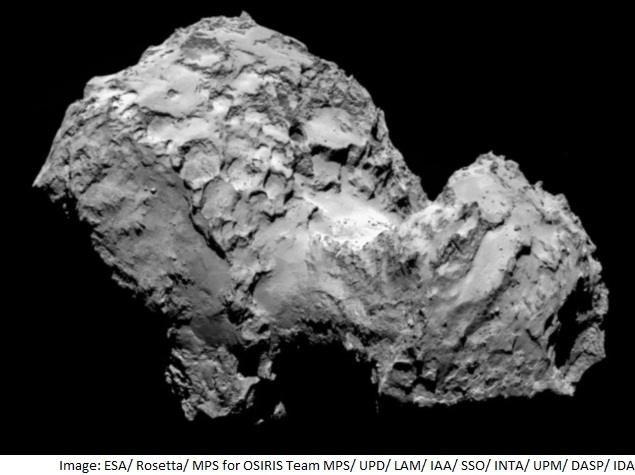- Home
- Science
- Science News
- No New Contact With Philae Comet Lander, Scientists Say
No New Contact With Philae Comet Lander, Scientists Say

The fridge-sized robotic lab, which landed on a comet called 67P/Churyumov-Gerasimenko in November in an historic first, last made contact via the Rosetta orbiter on July 9.
The lander initially bounced away from its intended landing place upon reaching the comet and settled in the shadows where there was not enough sunlight to power its solar panels.
But with the comet approaching the sun, Philae woke up last month, stirring hopes that more information could be gleaned from the surface of comet using the lander's drilling and measuring tools.
Scientists said last week they fear the lander may have shifted position again, hampering communication efforts.
"In the telemetry received, we have observed signs that Philae could have moved and that its antennas are thus perhaps more concealed or their orientation might have changed," said project leader Stephan Ulamec of the German Aerospace Center (DLR). The data also indicated one of Philae's two transmission units appeared not to be working properly, and a receiver was damaged
Attempts to contact Philae will now take a break for two weeks while Rosetta explores the southern side of the comet with its own instruments, Koen Geurts from the lander control team at the DLR German Aerospace Center said in a video message.
"In about two weeks, Rosetta will be flying back north again and communication could be possible," Geurts said.
Written with agency inputs
For the latest tech news and reviews, follow Gadgets 360 on X, Facebook, WhatsApp, Threads and Google News. For the latest videos on gadgets and tech, subscribe to our YouTube channel. If you want to know everything about top influencers, follow our in-house Who'sThat360 on Instagram and YouTube.
Related Stories
- Samsung Galaxy Unpacked 2025
- ChatGPT
- Redmi Note 14 Pro+
- iPhone 16
- Apple Vision Pro
- Oneplus 12
- OnePlus Nord CE 3 Lite 5G
- iPhone 13
- Xiaomi 14 Pro
- Oppo Find N3
- Tecno Spark Go (2023)
- Realme V30
- Best Phones Under 25000
- Samsung Galaxy S24 Series
- Cryptocurrency
- iQoo 12
- Samsung Galaxy S24 Ultra
- Giottus
- Samsung Galaxy Z Flip 5
- Apple 'Scary Fast'
- Housefull 5
- GoPro Hero 12 Black Review
- Invincible Season 2
- JioGlass
- HD Ready TV
- Laptop Under 50000
- Smartwatch Under 10000
- Latest Mobile Phones
- Compare Phones
- Redmi Turbo 4
- Vivo Y200+
- Lava Yuva 2 5G
- OnePlus Ace 5
- OnePlus Ace 5 Pro
- Oppo A5 Pro 5G
- Vivo Y29 5G
- Honor Magic 7 RSR Porsche Design
- Asus Zenbook S 14
- MacBook Pro 16-inch (M4 Max, 2024)
- Honor Pad X9 Pro
- Honor Pad V9
- boAt Enigma Gem
- boAt Enigma Daze
- Sony 65 Inches Ultra HD (4K) LED Smart TV (KD-65X74L)
- TCL 55 Inches Ultra HD (4K) LED Smart TV (55C61B)
- Sony PlayStation 5 Pro
- Sony PlayStation 5 Slim Digital Edition
- Blue Star 1.5 Ton 3 Star Inverter Split AC (IC318DNUHC)
- Blue Star 1.5 Ton 3 Star Inverter Split AC (IA318VKU)

















